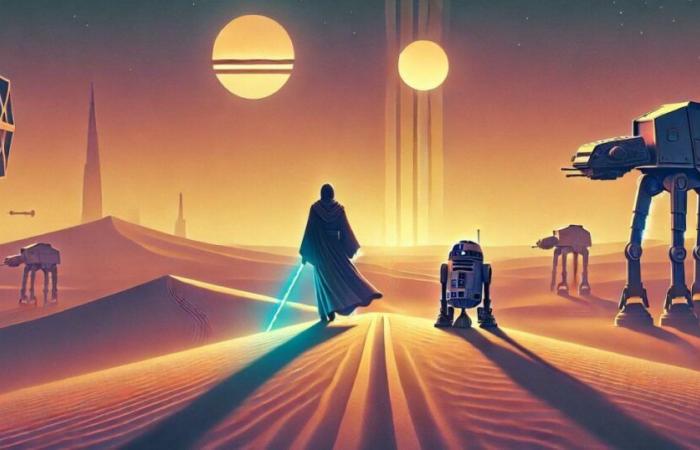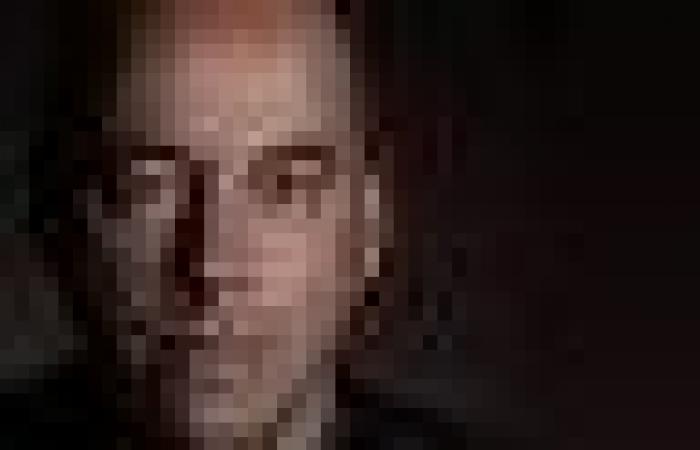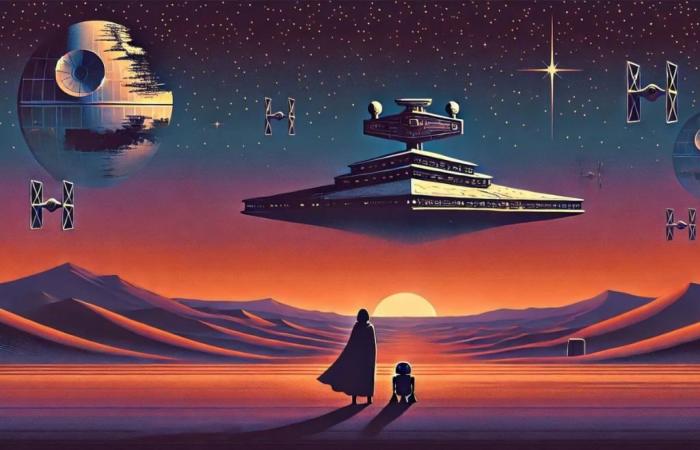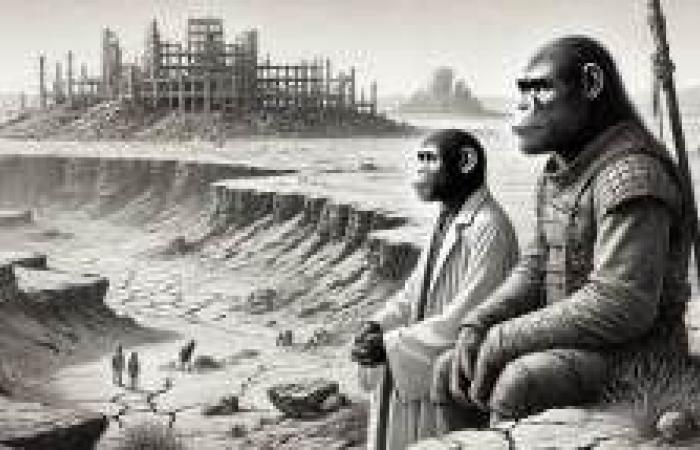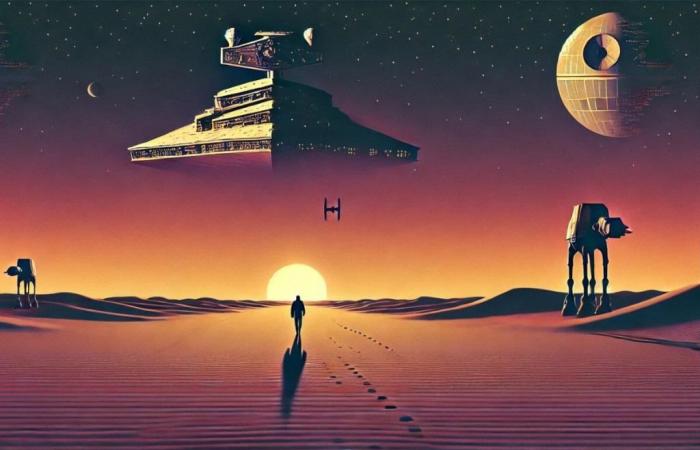Created: 8.05.2025 | 19:00 Updated: 8.05.2025 | 19:00
A long time ago, in a distant, very distant galaxy … “Episode IV: a new hope “, Soso and easy title where there are, it was called “The Galaxias war”, And it seemed to be a film with beginning and end. While his monumental box office success guaranteed that there would be continuations, they were not necessary to understand and enjoy the adventures of the young Luke Skywalker.
Despite the debate about whether it is a great work of science fiction or fantasyLucas’s saga is a cultural reference for generations.
A film that changed the course of science fiction
It is not just that this initial production has grown without stopping, until it becomes one of the most profitable registered brands in the history of cinema, with A value that could exceed 50 billion dollars between films, series and derived productsnor that its expansion after that Big Bang has no traces of stopping; It was that it was a film that, like “2001: space odyssey” in its day, science fiction changed forever, although differently: if Kubrick’s tape claimed the ability of the genre to enter adult themes, that of George Lucas He bet on fantasy and fun.
In fact, there are serious doubts about whether “Star Wars” could be considered science fiction. Yes, alien races, spacecraft, futuristic weapons and unknown worlds come out, but He lacks the mandatory element of anchor with our real world.
The famous phrase of the beginning of each film already makes it clear that what we are going to see is a fairy tale, so close to true science fiction as Tolkien’s world to ancient history. The most accurate category with which it has been defined is that of Space Opera (adventure, epic or space epic), subgenre to which hundreds of titles have since been pointed out.
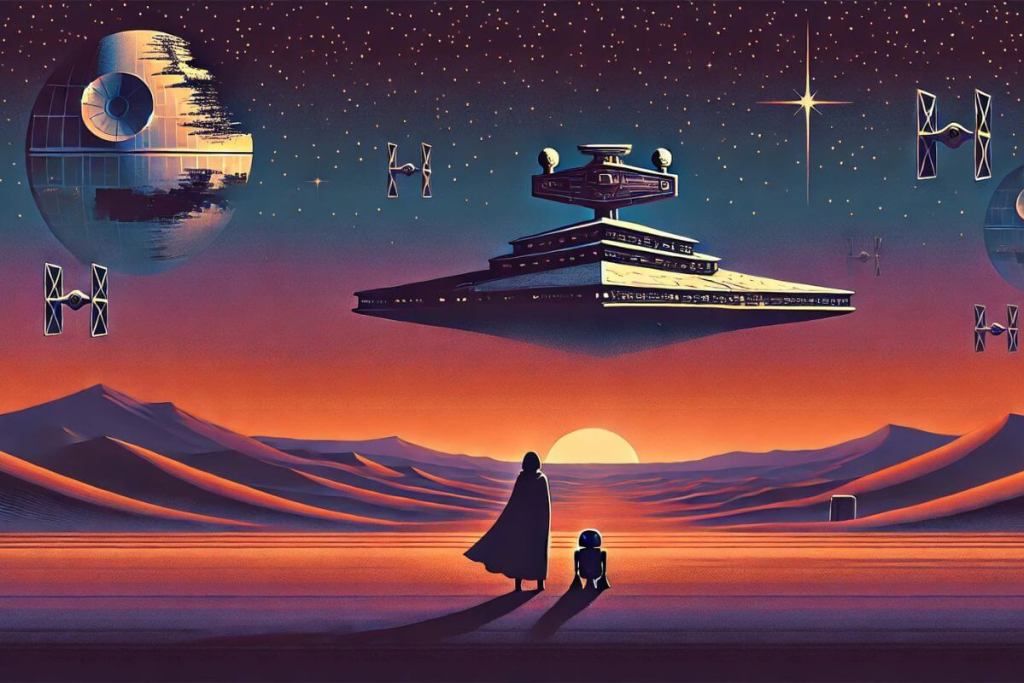
Of an misunderstood project to the greatest phenomenon of cinema
But you have to return to 1975, when George Lucas, after the success of his second film, “American Graffiti”, he made the executives of the 20th Century Fox his project (Universal, producer of “American Graffiti” did not want to know anything). The problem was that The initial idea did not understand much: “Mace Windu, reverenced Jedi-Banda of the OPUCHI, related to USby CJ Thorpe, Padawaan apprentice of the famous Jedi …”.
Yet, Fox Alan Ladd Jr. executive believed enough in Lucas to ensure a budget of 3.5 million dollars, and then upload it to 8.5 (including 20,000 additional pounds to roll the famous scene of the canteen). For his part, Lucas was polishing that initial idea, in which he had been working since 1972, until he left it in a simple and closed story: the rescue of a princess and the destruction of the main base of the evil galactic empire.
As innovative that it might seem, the Galaxies War repeats many previous influences, of Flash Gordon’s adventures to the saga of “The New Gods” created by Jack Kirby for DC Comics, not forgetting the essay “The hero of the thousand faces”, of the anthropologist Joseph Campbell, in which he analyzed How the essence of heroic narratives has not changed over the centuries.
But he knew amalgamate these influences without plagiarizing any and offering something completely new: The special effects created by John Dykstra allowed to see things that had never appeared on a screensuch as the famous zenith plane of the endless imperial destroyer with which the film opens, the spatial fighter battles or laser swords.
A cast full of unknown faces that turned the classic archetypes around
The main actors were unknown (The anecdote that tells how those years Harrison Ford earned a living as a carpenter), is famous, with the exception of two weight names in the secondary characters: Peter Cushing and Alec Guinness. The latter accepted only for money and always considered that his dialogues were recharged and banal …
But when he found out during the filming that Obi-Wan Kenobi He died in the middle of the film in his duel with Darth Vader, he was about to resign.
But are such banal dialogues? Everything related to force can have a slightly empty pomposity, of course, but the film introduces, between a prodigious scene and another, abundant humor blows, the majority in charge of the Androids C-3PO and R2D2of the fanfare cynicism of Han Solo and of the sarcasm of Leiaa character that surprised many critics for their hardness and arrests, and who completely turned the princess topic in trouble.
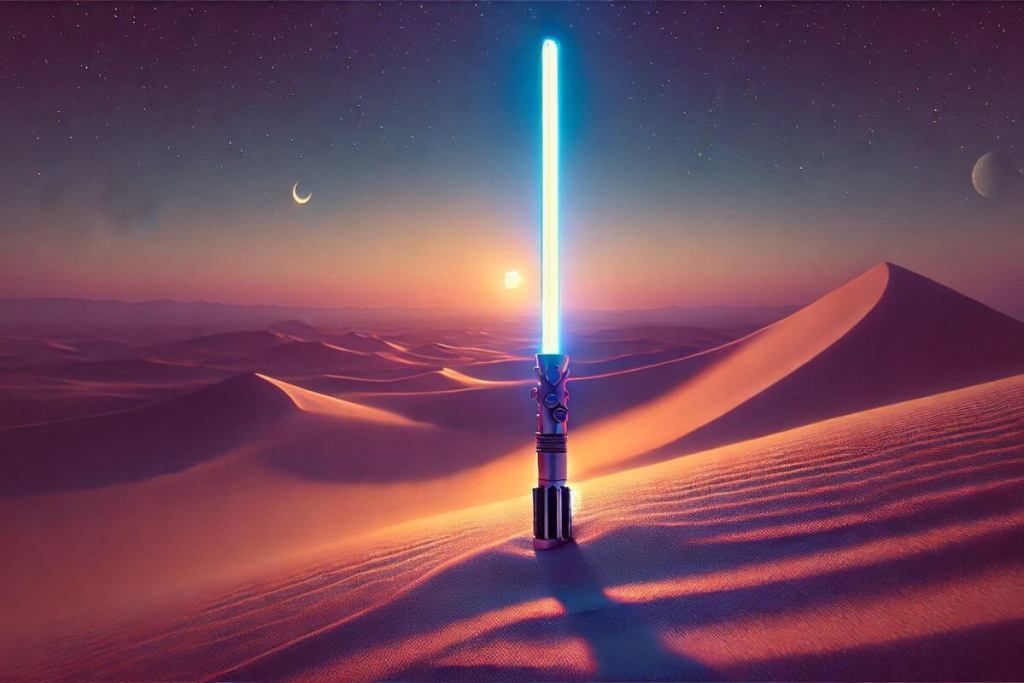
A chaotic filming for a world legend
All the force of the universe was not enough to free the director of an infernal filming. Sand storms and torrential rains in Tunisia; constant discussions with the technicians in London; And the finding that, when the work with actors concluded, the special effects team had spent a million dollars to achieve only three passable scenes (although the investment laid the foundations of the entire technical process that would soon obtain bright results).
Lucas became ill to his return in the United States several times he had to spend a night at the hospital. Previous passes to criticism and Fox executives didn’t help much and the general feeling of the film, at most, would achieve modest benefits prevailed.
It costs to describe what that premiere meant at a time when movies could only be seen in theaters and the only way to access them was going through the box office. Lines of several apples of length, news programs dedicated only to “the war of the galaxies”, a truly planetary fever … and Lucas suddenly turned the most powerful man in Hollywoodpreparing a continuation where he would begin to reveal the secret that had been kept during all this time: that the true protagonist of the saga was Darth Father.
An expanded universe before it was a trend
What began as a closed story about a rescue and a rebellion ended up becoming the skeleton of a Modern mythology. Although George Lucas was not fully clear if there would be more deliveries, the universe of “Star Wars” grew rapidly with novels, comics and toys That, beyond pure trade, they were key to keeping the story between film and film alive.
Thus, the saga began to function as a Great fragmented narrationwhere each new content contributed nuances to the characters and deepened the politics, religion and history of that distant galaxy.
Long before the notion of cinematographic universe was exploited by Marvel or DC, Lucas already played with crossed temporal lines, prequels and parallel stories. When in 1999 “the ghost threat” was released, the public discovered not only the origins of Anakin Skywalkerbut also how “Star Wars” could rewrite itself from new angles.
The criticisms were hard, partly because nostalgia weighs more than any digital effect, but the machinery was already underway. The story ceased to be linear and became coralinterconnected, expansive.
The new fanotics entered where they could: for an animated series, by a video game, for an action figure. It was not necessary to have seen the original films to enjoy a canon corner. What for some purists was a betrayal, For Lucas and his successors it was a narrative opportunity.
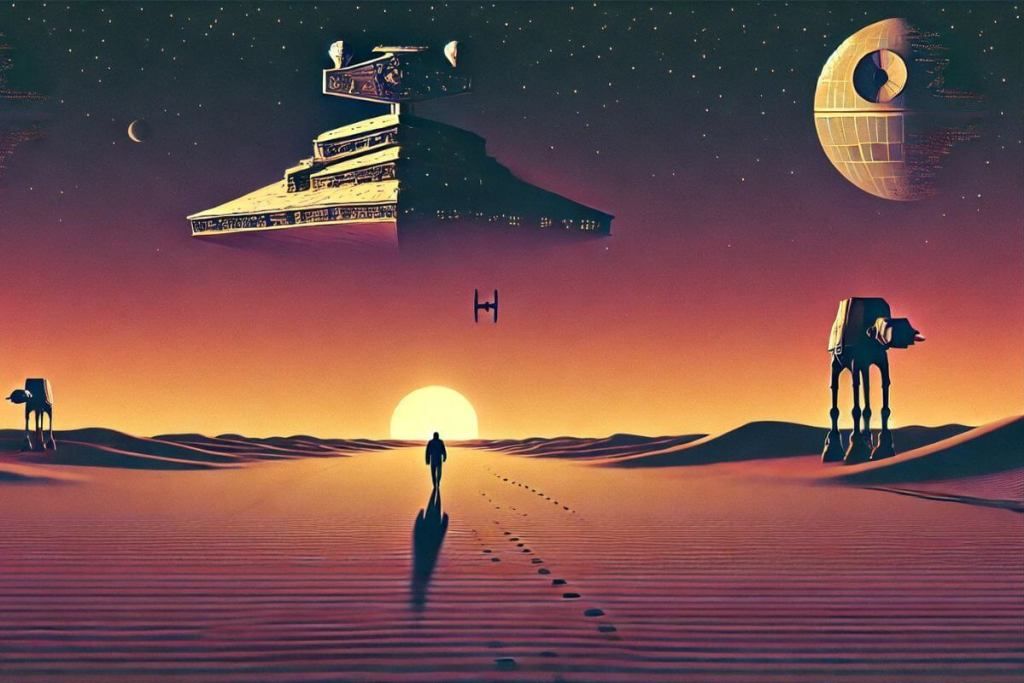
Among all the elements that defined “the war of the galaxies”, the force is perhaps the most ambiguous and, at the same time, the most powerful. Initially conceived as a mystical energy that permeates everything and unites living beings, The force has been interpreted in a thousand ways: as oriental philosophy, as a spiritual metaphor, as a narrative resource. Its indefinition has actually been one of its great virtues, allowing each spectator to adapt it to its own belief system.
The popularization of expressions such as “For force to accompany you” or the conversion of Star Wars Day (May 4) In a world celebration they have turned that concept into part of common language. Some have even tried to transform it into registered religion – Jedismo – with more anecdotal results than serious.
But what underlies that appropriation is the symbolic power that Lucas knew how to give a simple story: in a world where certainty is scarce, The idea of an invisible energy that guides fate resonates strongly.
The success of “The Galaxies War” is not explained only for its battles, its exotic planets or its curious creatures, but for having touched something deep in the collective imaginary. Among its neon lights and its sound, the saga inserted Classic questions about good, evil, fate and redemption. In other words: on the bright and dark side that we all carry inside.

